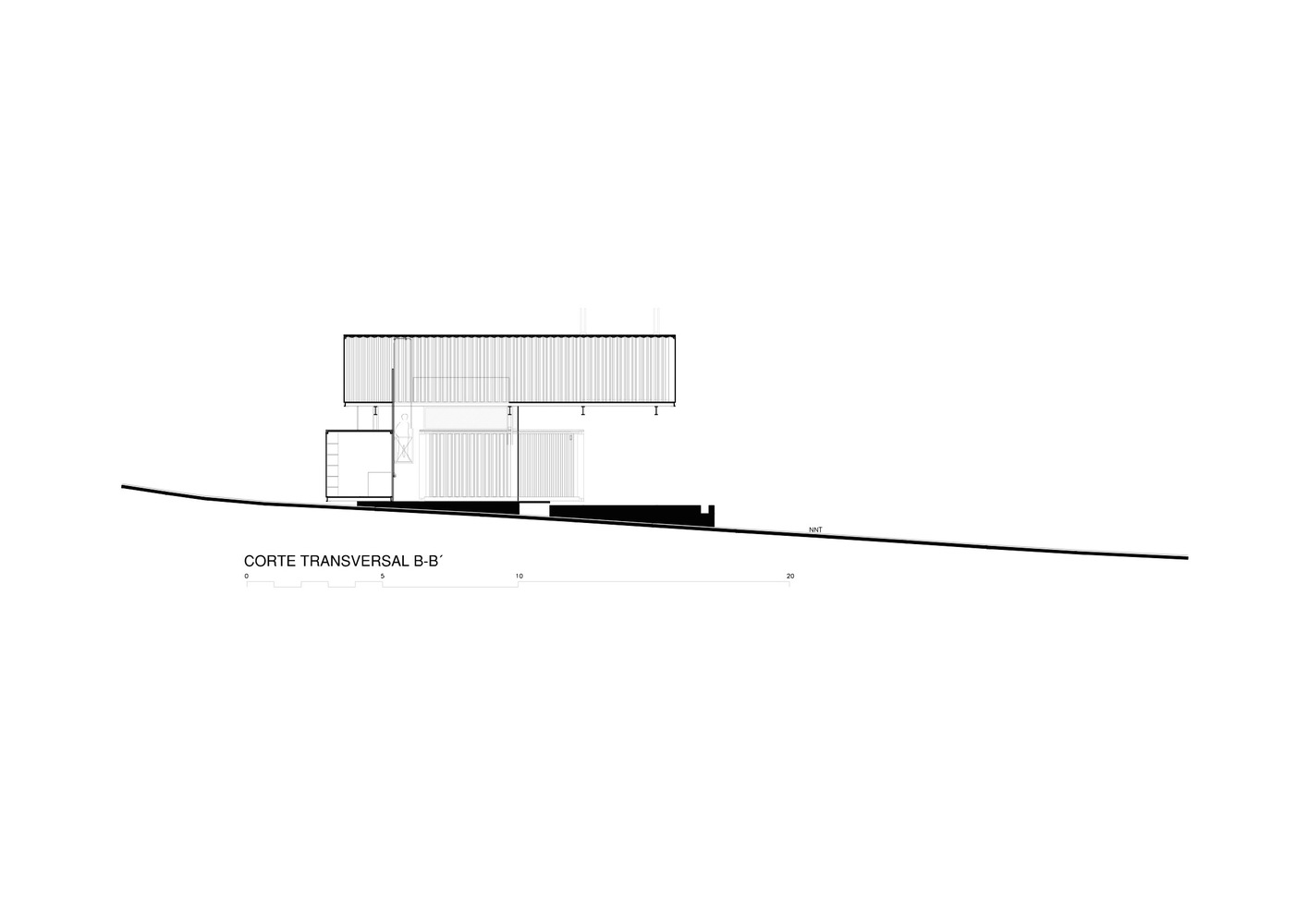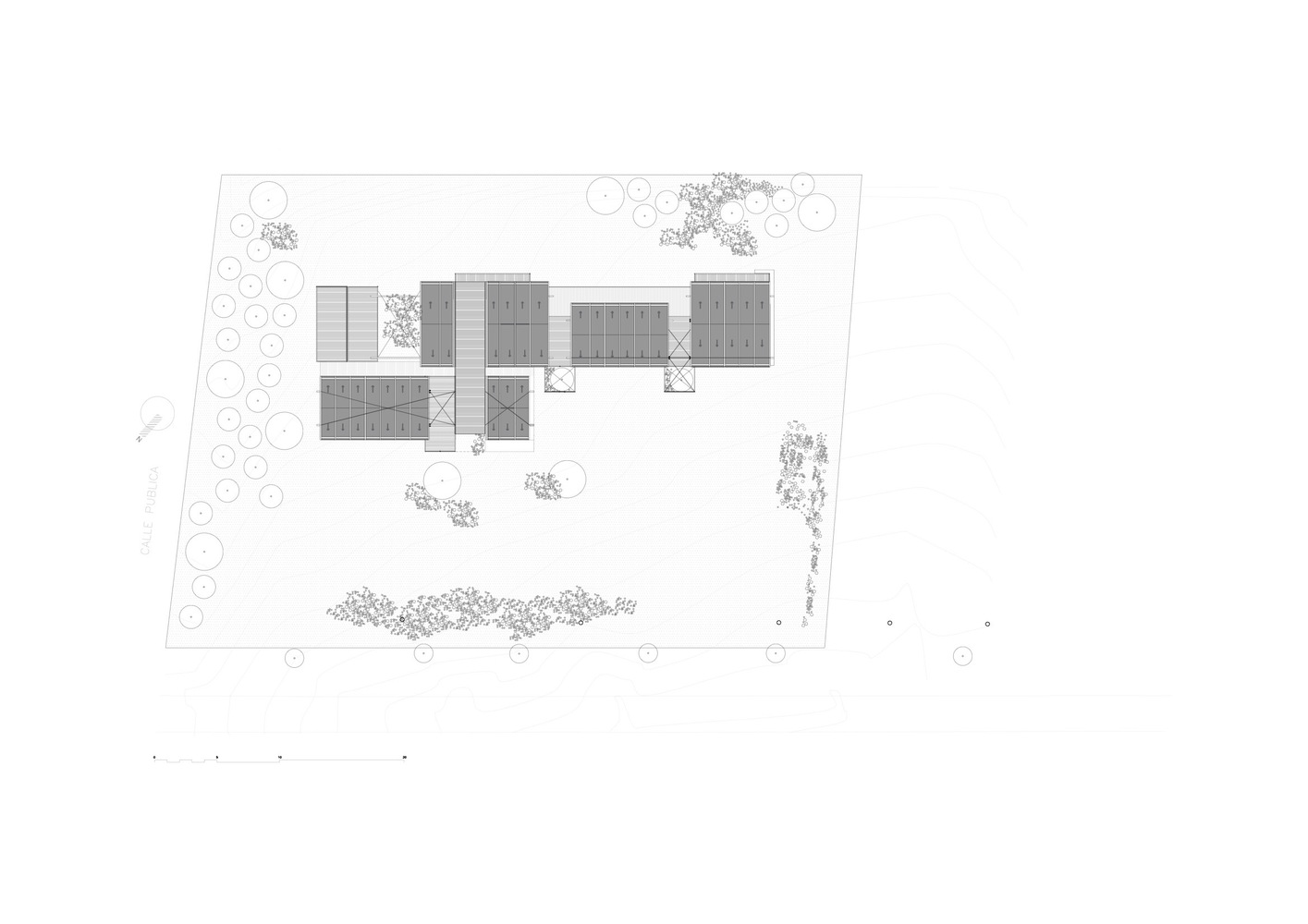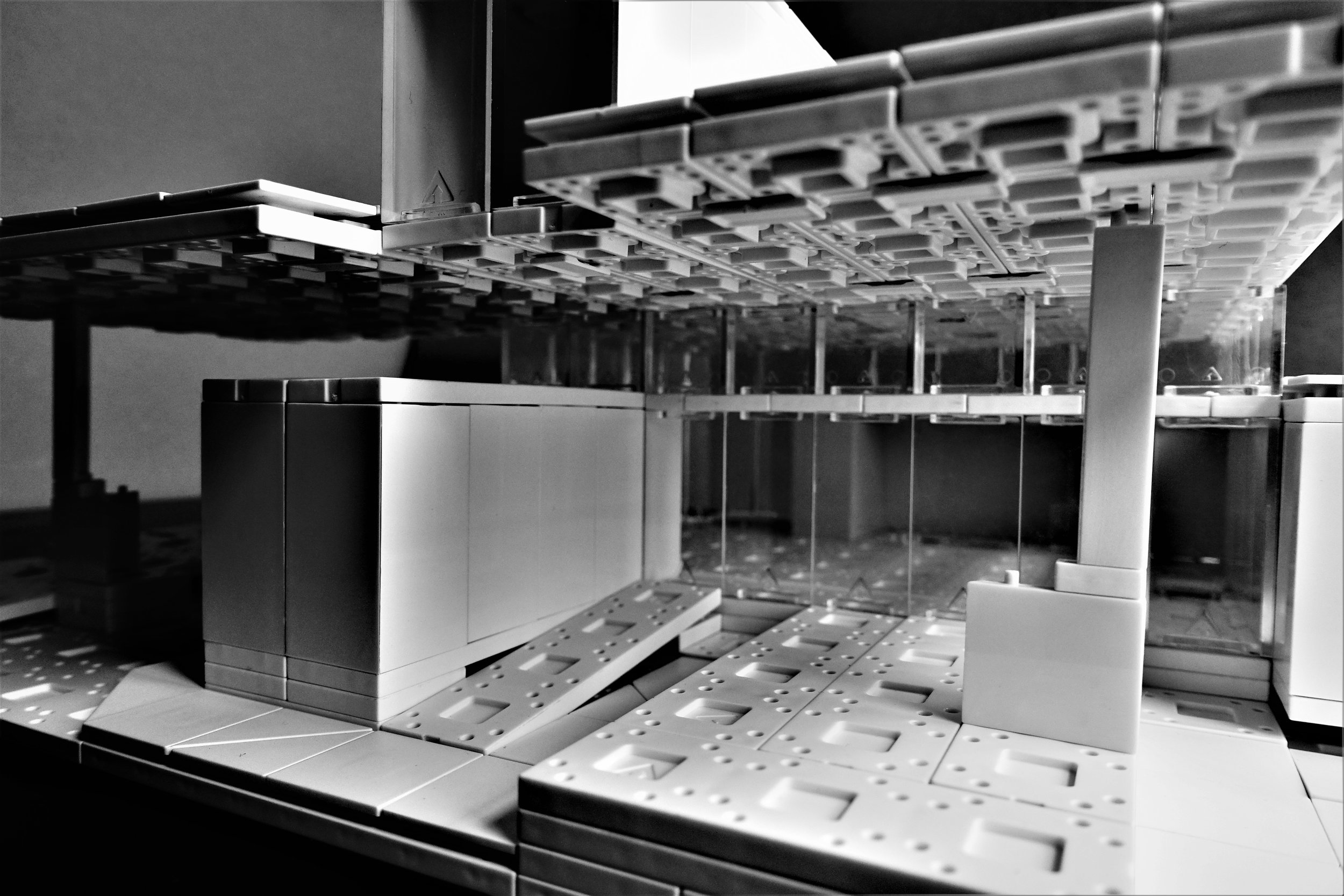ARCKIT Model 38 - RDP House
Featuring Danielle Waters
“The projects in which we get involved come as an answer to the understanding of all parties and to the singularities of each particular environment. Our intention is not to look for predetermined solutions, so the ideas for this house are born from wishes, experiences and the clients’ ways of living.”
Case Study
RDP House is nestled in the flat grasslands of La Tomeca, on the outskirts of the hectic city of Pichincha, Ecuador. Completed in 2015 by local architect Daniel Moreno Flores in collaboration with Sebastian Calero, the home’s design uses reclaimed shipping containers to reflect the client’s passion for mechanical assemblies. Its rugged and industrial utilitarian style is punctuated by wooden interiors and glass walls that tie the container forms together. Actively designed with the client in mind, all connections and materials are exposed, indulging the client in his desire to live in "a machine whose function and construction were easily understood at every angle and level of detail."
Ever since the client was young, he would break down old clocks to decipher their mechanisms. His enthusiasm for mechanics continued as he later delved into motorbikes and other automotive machines. His dream home could be dismantled just like a clock. Constructive solutions and building assemblies would be visible, no matter their material and manufacture. Immediately, the idea of using shipping containers to experiment with sustainability came into play. In Ecuador, shipping containers become waste after their lifespan has expired, making their pileup and discard a huge problem for the country. Changing their function and making them habitable gives them a new lease on life and emphasizes sustainable construction. Honouring his wishes, RDP House represents all these ideals and can be fully dismantled into modules and transported elsewhere, if necessary.
Construction began with the arrival of seven 20-foot containers and one 40-foot container on site. Very little was done to modify the containers, which closely represent their original form, and only "calculated modifications were made to improve the ventilation or integration of electrical or mechanical systems." For example, the architects removed the factory paint from their exteriors, revealing all scratches and dents to highlight each container's legacy. In contrast, they cladded their interiors in wood and painted them white. These design decisions were coupled with large glass windows throughout, indoor-outdoor patios, and a balcony on the top floor. The entire home was exposed to natural light and ventilated with natural air, melding it with the peaceful surroundings.
Containers are imperfect, keeping all their scars as a reminder of their history. Seemingly laid randomly around the site, these objects were conceived as "the complementary spaces of the house," offering storage rooms, bathrooms, closets, and a kitchen.
The construction of the home was executed in four phases. First, concrete foundations were poured to support the metal crates. Second, steel beams were installed to span the containers and support the entire roof system. Third, an array of pulleys and tensile cables were implemented to support all the glass walls, connecting and enclosing any remaining voids. Finally, wooden planks were used to define walkways, walls, and eaves, providing warmth and rhythm to the aesthetics of glass, corrugated metal, and concrete.
To cater to the owner's passions, various mechanical systems were then installed: a manual elevator to access the second floor, operable shutters and louvers to control the bedrooms’ lighting, and a flexible floor that retracted to reveal the master bedroom’s bathtub. "All these solutions are like a game that allows the user to be a part of a style of architecture thought specifically for them." Overall, the home is more than a residence. It characterizes a unique lifestyle and aims to prove that simple and sustainable designs do not inhibit luxury or happiness. As I always say, less is more.
Diagramming
Project Details
To begin the project, Danielle and I laid out a large base plate using Arckit 4X4 tiles, and then proceeded to stack additional plates to achieve the same site topography. Next, we created eight separate shipping containers and placed them down in their respective locations. Built at a 1:48 scale, our shipping containers were 2x5 Arckit units. From here, we glazed off the spaces between the containers, enclosed the interior space, and used glass half-wall sections to elevate the central living space an additional 4 feet. We then placed three separate roof sections across the entire model and the elevated 40-foot container on top. To complete the model, we tiled the entire landscape and roof. Overall, this model was quite simple to build and improved our collective understanding of how the spaces were distributed. The most difficult part of the build was figuring out the initial dimensions and adjusting the model to the different topographical heights.
Photo Gallery
Video Documentation
Notes
Danielle Waters is a full-time senior student at the University of Maryland, College Park. She has earned an AA degree and is currently pursuing a Bachelor’s degree in Architecture. Her career interests are environmental sustainability, historical preservation, and residential design.
If you have any questions, suggestions or comments, we would love to hear from you in the comments section below or through email at rikysongsu@gmail.com.





















